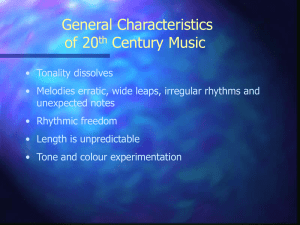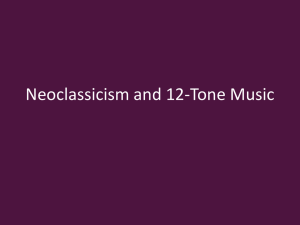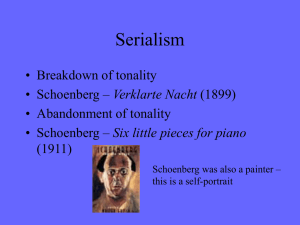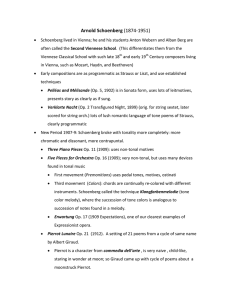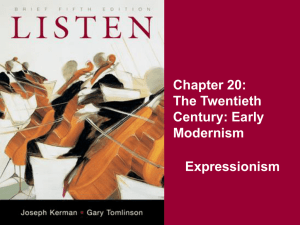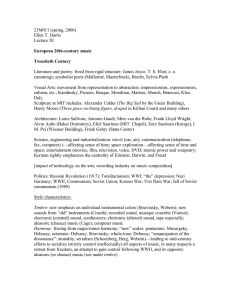Second Viennese School :
advertisement
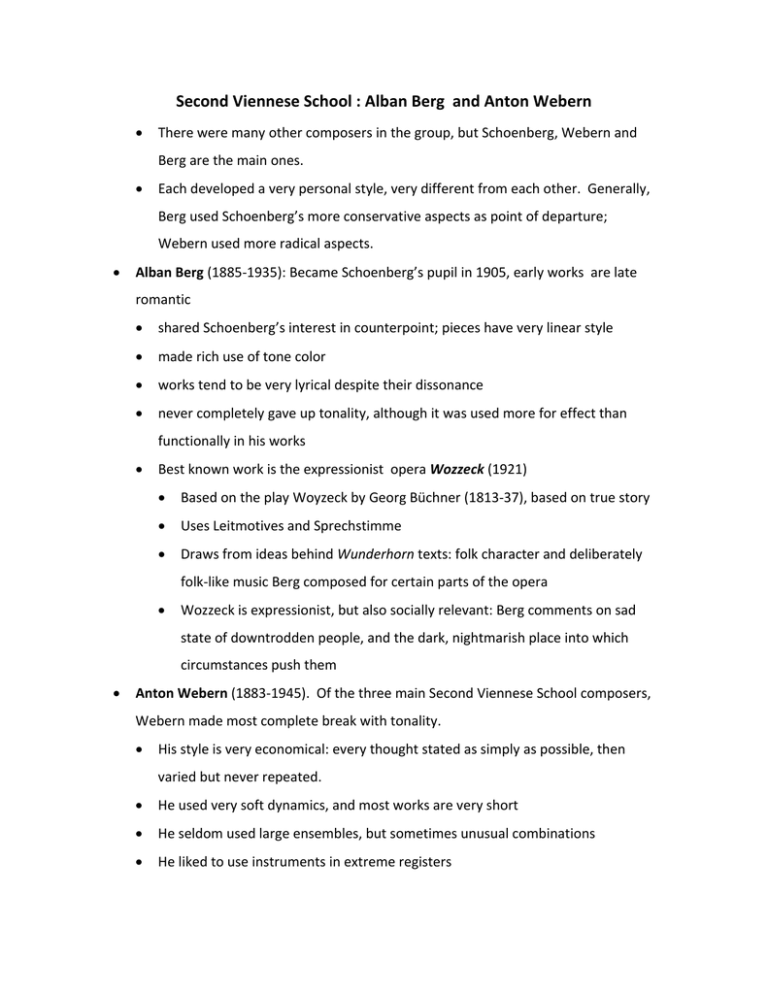
Second Viennese School : Alban Berg and Anton Webern There were many other composers in the group, but Schoenberg, Webern and Berg are the main ones. Each developed a very personal style, very different from each other. Generally, Berg used Schoenberg’s more conservative aspects as point of departure; Webern used more radical aspects. Alban Berg (1885‐1935): Became Schoenberg’s pupil in 1905, early works are late romantic shared Schoenberg’s interest in counterpoint; pieces have very linear style made rich use of tone color works tend to be very lyrical despite their dissonance never completely gave up tonality, although it was used more for effect than functionally in his works Best known work is the expressionist opera Wozzeck (1921) Based on the play Woyzeck by Georg Büchner (1813‐37), based on true story Uses Leitmotives and Sprechstimme Draws from ideas behind Wunderhorn texts: folk character and deliberately folk‐like music Berg composed for certain parts of the opera Wozzeck is expressionist, but also socially relevant: Berg comments on sad state of downtrodden people, and the dark, nightmarish place into which circumstances push them Anton Webern (1883‐1945). Of the three main Second Viennese School composers, Webern made most complete break with tonality. His style is very economical: every thought stated as simply as possible, then varied but never repeated. He used very soft dynamics, and most works are very short He seldom used large ensembles, but sometimes unusual combinations He liked to use instruments in extreme registers He sometimes wrote melodies with each note in different instrument or Pointillist: each note is a miniature pinpoint of sound. In these passages, color is at least as important as pitch, a different kind of Klangfarbenmelodie Example: Five Pieces for Orchestra, Op. 10 (1911‐13) extremely short, no repetition of ideas sounds very abstract, but some allusion to nature in 3rd piece: suggests cowbell
